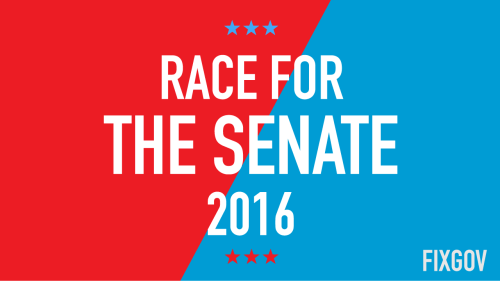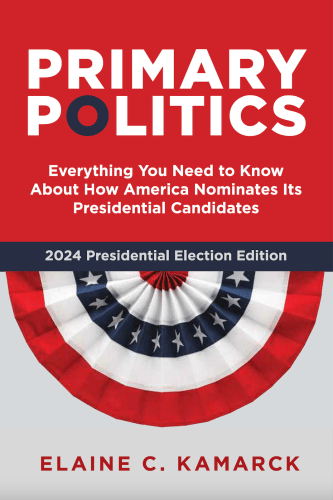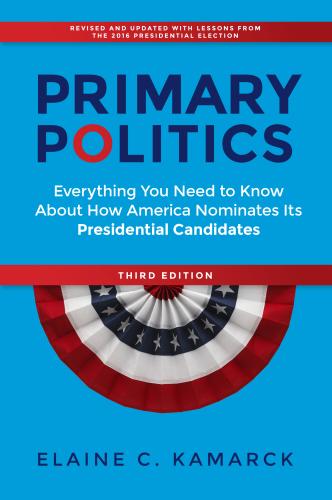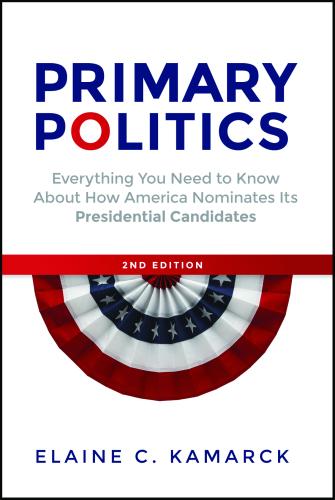Thomas Wood is an Assistant Professor of Political Science at Ohio State University. You can find him on Twitter at @thomasjwood.
GOP presidential nominee Donald Trump has posed a thorny strategic dilemma to this cycle’s Republican Senate candidates. This dilemma has two parts. First, even by the hyper partisan standards of modern American politics, Trump divides potential support in a way unseen among presidential candidates. While Trump has reliably enjoyed the support of around 80 percent of registered Republicans, he has struggled to solidify independents’ support. Republican Senate candidates must normally draw large numbers of independents to offset Democrats’ numeric advantage. This is especially true in battleground states, like Ohio, which are more politically balanced than the nation as a whole.
The other challenge for GOP Senate hopefuls is Trump’s anemic campaign efforts. Trump and his PAC allies have been dilatory advertisers. As of October, the GOP has aired fewer ads than in any presidential election since 2000. Compounding this, Trump has also barely invested in convention turnout infrastructure. He has opened few field offices, hired fewer field staff, and, according to public accounts, the campaign is not coordinating efforts with the national party. Republican Senate candidates in battleground states depend heavily on their party’s Presidential campaign to mobilize enough Republicans to partially offset Democratic turnout efforts.
Thus the uncomfortable dance that some Senate Republicans have attempted since early this summer. First time incumbent Mark Kirk in Illinois publically opposed Trump from the outset. Some “purple state” incumbents were more equivocal. Kelly Ayotte, of New Hampshire, attempted to thread the needle by refusing to endorse Trump, but committing to vote for him—an attempt to be sufficiently supportive of Trump to avoid any conservative protest, while being sufficiently diffident to earn the support of centrists who are otherwise positively disposed toward their Senate incumbent.
So is Rob Portman, the second term incumbent Senator from Ohio, the swingiest of swing states, doomed because of Trump’s fading electoral prospects? Far from it—Portman appears to be running away with this race.
Consider the graph below. On the last two general elections, both Ohio Senate incumbents ran for reelection. In 2012, Sherrod Brown (D) ran against state treasurer Josh Mandel as President Obama ran for his second term. The top panel shows each statewide poll’s reported Senate lead (the hollow points) and Presidential lead (the solid points). Points above the horizontal indicate the Republican candidate is leading, and points below indicate a Democratic lead. The 2012 race is consistent with Presidential coattails—Brown lead Mandel by only 3-4 percentage points more than Obama lead Romney. A better showing by the GOP presidential candidate might have doomed Brown, regardless of his own race’s dynamics.
The bottom panel, comparing Portman’s Senate race and Trump’s presidential tie, shows a very different picture. Until mid-summer, Portman was doing better than his party’s Presidential nominee, but was still tied or behind his opponent, Ted Strickland. From July onward, Portman has gradually opened a 10-15 point lead, behind rigorous campaigning and a torrent of negative advertising against his opponent. Demonstrating how effectively Portman has decoupled his fate from Trump is the apparent timing of the move in polling—Trump has only improved by 4-5 percentage points, and did so two months after Portman made his move.

Looking at the broader history of Senate races in the state which have coincided with a Presidential election, we see cases of both strong presidential coattails, and those races where candidates have very successfully decoupled themselves from their party’s presidential candidate. Below, I plot the results of every Ohio Senate election which has coincided with a Presidential election since 1968. Counties are colored according to the difference between GOP senators and presidential candidates: red indicates the GOP Senate candidate outperformed the top of the ticket, and blue indicates Senate candidates’ underperformance.

Clearly, the 10-15 point advantage that Portman will likely enjoy over Trump’s statewide support is entirely consistent with those observed by previous senate races. The 1980 race stands out as particularly informative. John Glenn, maybe the most revered person in modern Ohio, was hardly troubled by the precarious position of his party’s presidential candidate, Jimmy Carter. This pattern is mostly replicated for two other highly effective Ohio senate incumbents: Republican George Voinovich was able to handily outpace even a winning George Bush in 2004, while Democrat Howard Metzenbaum was able to avoid the electoral thrashing his party’s presidential nominee endured in 1984.
This analysis has clearly shown that Presidential coattails are a factor worthy of attention in battleground state presidential elections. They are especially salient now, given the apparent difference in campaign capacity between the respective parties, and the growing number of Democrats who are responsive to mobilization efforts. They are far from the whole story, however. Senator Portman will likely comfortably outpace both his Democratic opponent and his party’s presidential nominee around the state. Competent campaign craft, advertising, and incumbency’s electoral benefits will more than compensate for this year’s unconventional Republican presidential candidate.







Commentary
Race for the Senate 2016: Key issues in Ohio
November 1, 2016